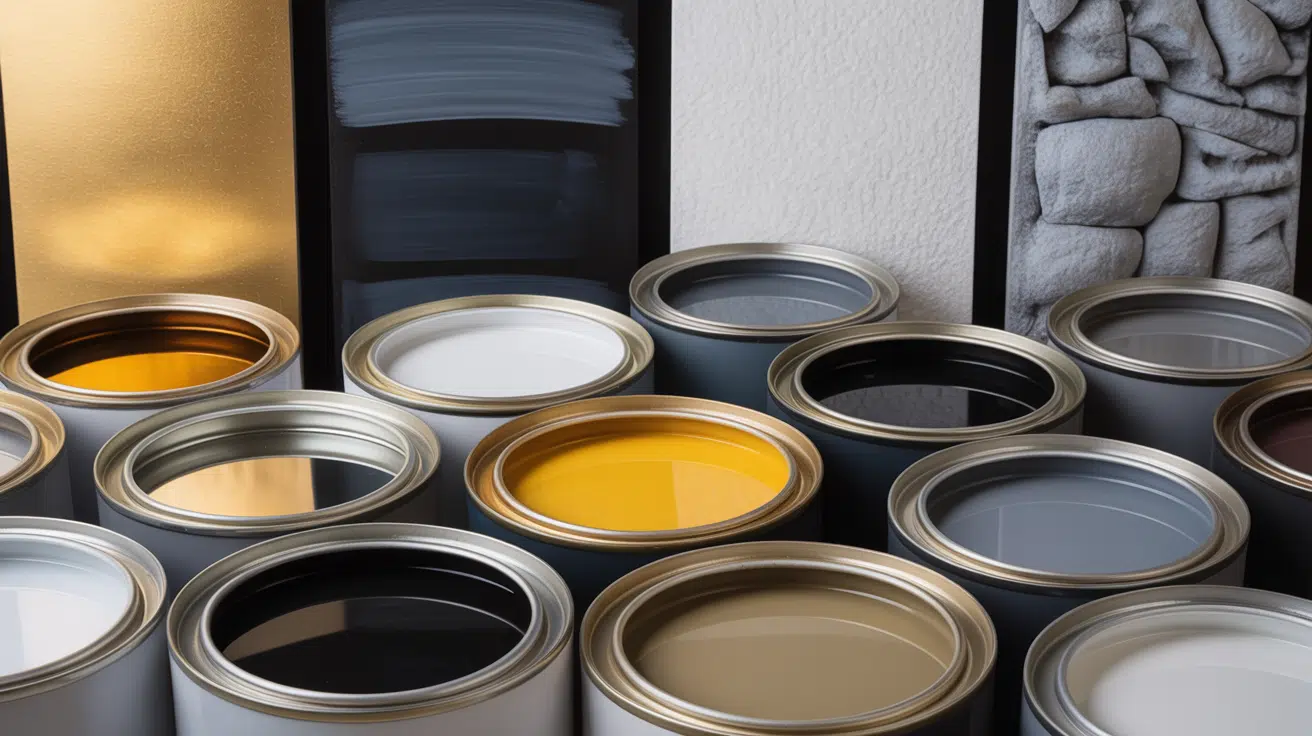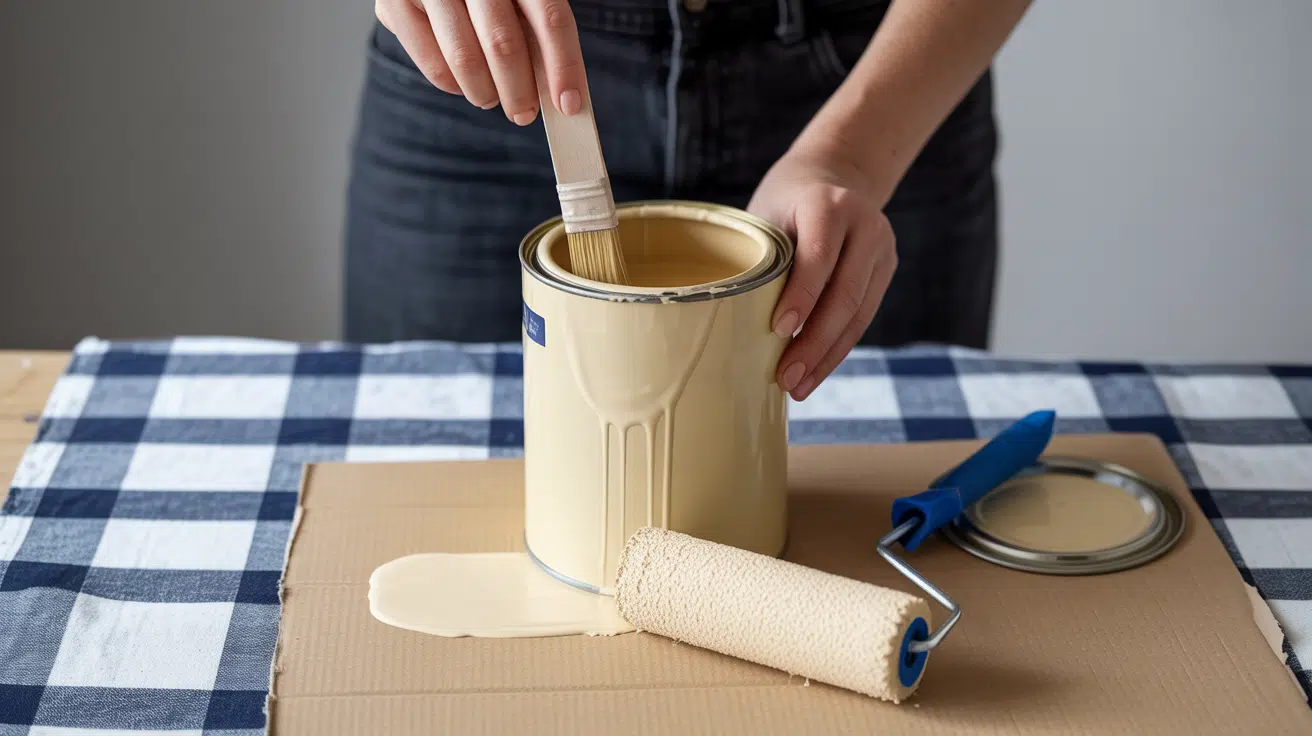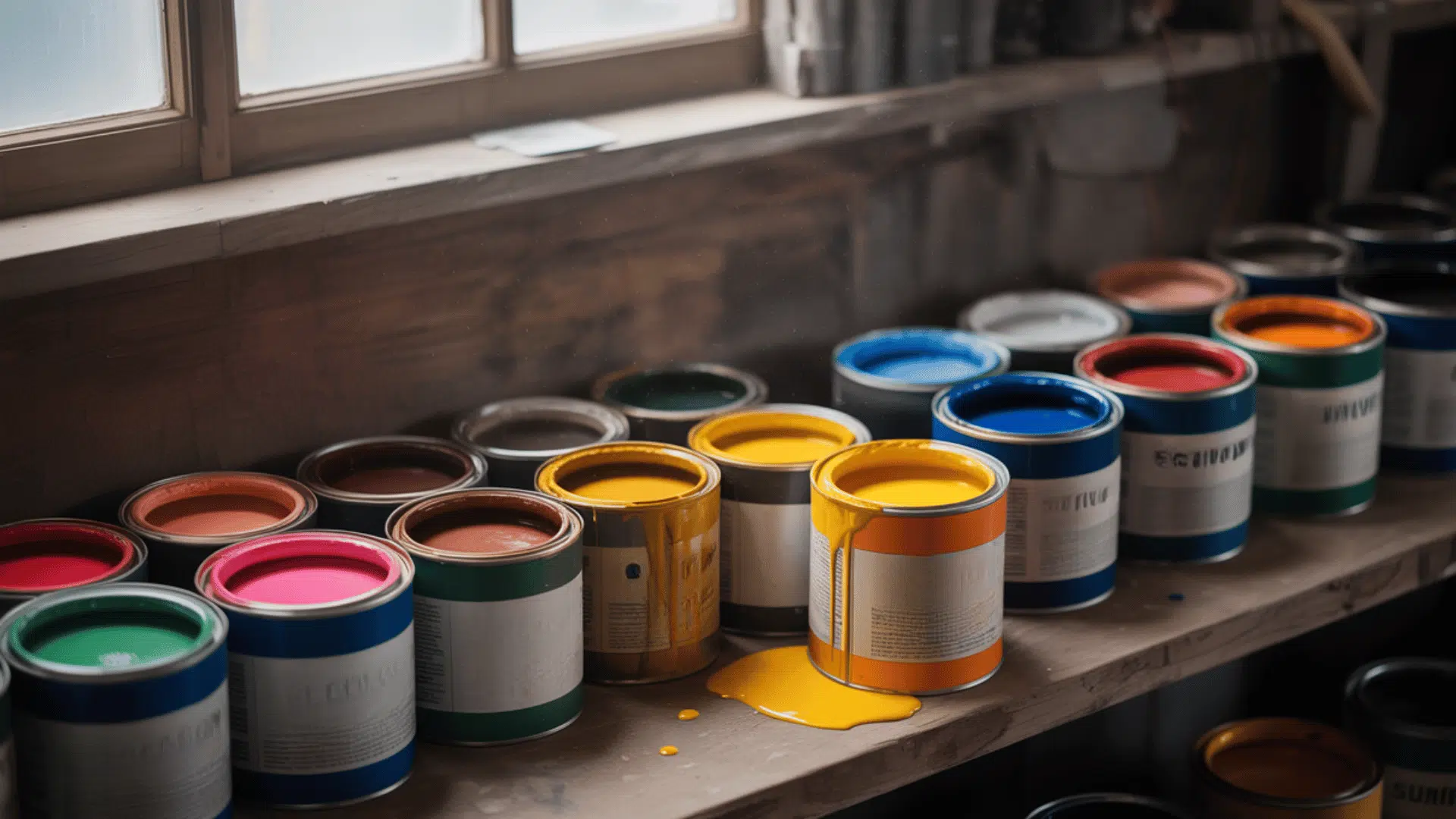Most people have half-used paint cans sitting in their garage or basement. They wonder if that leftover paint from last year’s project is still good to use.
Opening a can only to find dried, lumpy paint is frustrating and wasteful.
In this blog, you’ll find answers to how long wall paint lasts once opened, the storage methods, and signs of spoiled paint.
Factors Affecting the Lifespan of Opened Paint
Several factors determine how long opened paint remains usable. Storage conditions and paint type make the biggest difference.
1. Type of Paint
Different paint formulations have varying shelf lives after opening. The chemical composition determines how long the paint stays usable.
Oil-based varieties generally last longer than water-based options. Each type reacts differently to storage conditions and requires specific care to maintain quality over time
2. Storage Temperature
Temperature greatly affects paint longevity and quality over time. Paint stored in temperature-controlled spaces between 60-80°F lasts much longer.
Extreme heat or freezing temperatures break down paint’s chemical structure, causing separation, clumping, and complete product failure within months.
3. Container Seal Quality
A tight seal prevents air exposure and moisture contamination. Paint oxidizes when exposed to air, forming a thick skin on the surface.
Properly sealed cans with clean rims keep paint fresh for years, while poorly sealed containers allow paint to dry out quickly.
4. Amount of Paint Remaining
Cans with more paint stored inside last longer than nearly empty ones. Less paint means more air space in the container.
The extra air accelerates oxidation and drying. Full or nearly full cans maintain their consistency and quality much better over extended storage periods.
5. Moisture Exposure
Water and humidity ruin paint faster than almost anything else. Moisture causes mold growth, especially in latex paints.
Damp storage areas like unfinished basements create ideal conditions for paint spoilage. Rust forms on metal cans, contaminating the paint and making it unusable for future projects.
6. Original Paint Quality
Premium paints contain better preservatives and resist spoilage longer. Cheaper paints often deteriorate faster after opening.
High-quality brands use superior ingredients that maintain stability over time. The initial investment in better paint pays off when leftovers remain usable for years instead of months
How Long do Different Wall Paints Last Once Opened

Different paint types have varying lifespans once they are opened. Here is what you can expect from the most common varieties.
Latex paint
It typically lasts 2-3 years after opening. This water-based option is popular for interior walls but doesn’t age as gracefully as other types. The water content makes it more prone to bacterial growth and separation.
Oil-based paint
It can last an impressive 10-15 years once opened. These paints contain solvents that help preserve them for a longer period. However, they do thicken over time and may need thinning before use.
Acrylic paint
It usually stays good for 2-5 years after opening. It falls somewhere between latex and oil-based paints in terms of longevity. Quality acrylic paints tend to last on the higher end of this range.
Specialty paints
Textured or metallic finishes typically last 1-2 years after the product is opened. Their unique additives make them more susceptible to degradation.
Signs Your Paint Has Gone Bad
Knowing when your paint has expired can save you from a disappointing painting experience.
The following are the key indicators to look out for.
Strong foul odor
Fresh paint has a mild chemical smell, but bad paint develops a sour or rotten egg odor. If opening the can makes you wrinkle your nose, it’s time to toss it.
Thick, rubbery texture
It means the paint has begun to break down. Good paint should pour smoothly. If it feels like pudding or has hard lumps that won’t break apart, the paint is beyond saving.
Mold growth
It appears as fuzzy spots on the paint’s surface. This happens when moisture and bacteria take over. Mold can be green, black, or white – any of these colors spells trouble.
Separation issues
It occurs when paint components split apart. Some separation is normal, but if stirring doesn’t bring it back together, the paint has failed to adhere. You’ll see a clear liquid on top, with a thick paste below that won’t blend.
How to Test if Old Paint is Still Usable

Before starting your painting project, it’s a good idea to test the old paint first. A few simple checks can tell you if your paint is ready to use or if it’s ready for the trash.
Step 1: Start by Stirring Thoroughly
Check the consistency. Mix the paint well with a stir stick for at least two minutes.
Good paint should blend smoothly without lumps or chunks that won’t break apart. If you feel resistance or see stringy bits, that’s a bad sign.
Step 2: Apply a Test Patch
Apply a patch on cardboard or an inconspicuous wall area. Brush a small amount and watch how it spreads and covers the surface.
This shows you the paint’s flow and the quality of its application. Good paint should go on smoothly without dragging or clumping.
Step 3: Check the Drying Process
Check by letting your test patch dry completely, which usually takes 2-4 hours, depending on the type of paint.
Good paint dries evenly without streaks, bubbles, or rough texture. Pay attention to how the finish appears once it is dry.
Step 4: Compare the Color
Compare by holding your dried test patch against the original wall in natural light. Old paint sometimes shifts color or loses color over time. Even small color changes can be noticeable on your walls.
Step 5: Test the Coverage
Test to see if the paint covers well in one coat. Thinned or degraded paint often requires multiple coats for proper coverage, which wastes time and money.
Step 6: Smell the Dried Result
Smell once it’s completely dry. Fresh, good paint shouldn’t have strong chemical or sour odors after the drying process is complete.
When to Toss Paint and How to Dispose of It Safely
Getting rid of old paint requires more thought than tossing it in the trash. Paint contains chemicals that can harm the environment if not handled properly.
Check Local Regulations First
Every city and county has its own rules regarding paint disposal. Some allow dried latex paint to be disposed of in regular trash, while others require special collection.
Contact your local waste management office or visit their website for specific guidelines applicable to your area.
Household Hazardous Waste Centers
Most communities operate hazardous waste collection sites that accept old paint for free. These centers handle both latex and oil-based paints safely.
They often have specific hours and days for drop-offs, so call ahead to confirm their schedule.
Hardware Store Programs
Many home improvement stores, such as Home Depot and Lowe’s, partner with paint manufacturers to collect old paint. Some stores have permanent collection bins, while others host special collection events throughout the year.
Drying Out Latex Paint
If your local rules permit dried latex paint in regular trash, you can expedite the drying process by placing it in a sealed container.
Add kitty litter or paint hardener to small amounts. For larger quantities, leave the can open in a well-ventilated area until completely solid.
Never Pour Paint Down Drains
Paint can clog pipes and contaminate water supplies. Even water-based latex paint shouldn’t go down sinks or toilets. Oil-based paints are especially harmful to water treatment systems.
Storing Leftover Paint Properly
Proper storage can double or even triple the lifespan of your paint. The key is keeping air, moisture, and temperature fluctuations away from your paint.
- Seal the lid tightly: Use a rubber mallet to tap around the edges. Place plastic wrap over the opening before closing for extra protection.
- Store cans upside down: This creates an airtight seal using the paint itself. Flip right-side up and let it settle before opening.
- Choose the right location: Store paint in cool, dry places, such as basements or interior closets. Avoid attics, garages, or anywhere with extreme temperatures.
- Transfer small amounts: Use mason jars or airtight containers for leftover paint. Less air space means longer-lasting paint.
- Label everything clearly: Write the date opened, room used, and paint type on each container.
- Keep away from sunlight: Direct sunlight breaks down paint chemicals, causing premature aging.
Conclusion
Now you know exactly how long wall paint lasts once opened and what signs to watch for.
Proper storage makes all the difference; seal those lids tight, store in cool places, and transfer small amounts to smaller containers. When in doubt, do a simple test patch to check quality and color.
Don’t let good paint go to waste, but don’t risk ruining your project with bad paint either.
Don’t forget to check those old paint cans in your storage area today.












